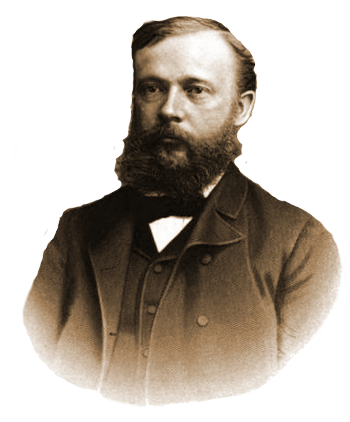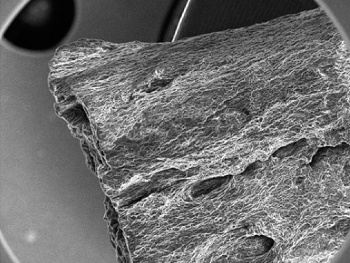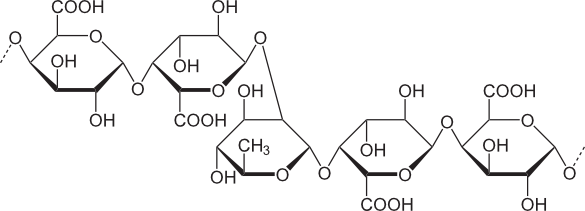Cyberwood Temperature Sensing
May 18, 2015
Just about any
material can be used as a
sensor for some
physical quantity. In my early years in the
laboratory, we would use
carbon composition
resistors as inexpensive
temperature sensors in
cryogenic experiments. These resistors are less than a
penny, each, and carbon has a large
temperature coefficient of resistivity.
This coefficient is about -0.0005 per
°C near
room temperature, the
negative sign indicates that the
resistance decreases as the temperature is increased. We would
calibrate our particular
resistors against another
thermometer. The temperature coefficient of resistivity
TCR is given by the
equation,

in which
∂R/∂T is the
partial derivative of resistance
R with respect to temperature. This can be
approximated by measuring the resistance values at an upper temperature
T2 and a lower temperature
T1, as shown. The partial derivative indicates that all other
variables are held constant, an important point, since the resistance of some materials is affected by other things, such as
magnetic fields, or exposure to
light.
While I found a large TCR to be useful, most
electronic circuit designers would rather have their resistors maintain the same value over a useful operating range. Fortunately, some
alloys with low TCR have been developed. The first,
constantan (Cu
55Ni
45) and
manganin (Cu
86Mn
12Ni
2), were
invented more than a hundred years ago by the
chemist,
Edward Weston. Weston was a prolific
inventor, having obtained 334 US
patents in his lifetime.

An 1890 portrait of Edward Weston (1850-1936)
Weston was president of the American Institute of Electrical Engineers, a predecessor of the Institute of Electrical and Electronics Engineers, from 1888-1889.
(Via Wikimedia Commons.)
Often, when you want to sense a certain physical parameter, the best materials exhibit a high temperature coefficient. The resistance of manganin is also
strain-dependent, and it's used in some strain sensors, including
pressure sensors in which the strain on a
diaphragm is measured. In this case, temperature errors are small, but there are materials with a much greater sensitivity to strain, and also a greater temperature coefficient. How can these be used?
For these materials, we arrange the resistors in a
bridge circuit in which two of the resistors are
compressed, the other two resistors are
stretched, and all resistors see the same temperature (see figure). The bridge cancels out the temperature effect, while doubling the strain effect. In the figure, the arrows alongside the resistors indicate the strain response, either increasing, or decreasing, with strain.

A current source produces a voltage from an imbalance of a resistance bridge.
(Illustration by the author using Inkscape.)
Of course, when sensitive
thermometry is needed, a material with a large temperature coefficient of resistivity would be beneficial. One important application of thermometry is
calorimetry, but measuring the small amount of
heat associated with things like the
metabolism of
bacterial cells would require an extremely sensitive thermometer.
Scientists from the
Swiss Federal Institute of Technology (ETH Zürich), the
California Institute of Technology (Pasadena, California), and the
University of Salerno (Fisciano, Italy), have developed a
bionic composite material made of
plant cells and
carbon nanotubes (CNTs) that exhibits a temperature sensitivity about two
orders of magnitude greater than the best available materials.[1-2]
Since
nature has perfected her mechanisms by
evolution over the course of
millions of years, we've always looked at ways in which we can mimic nature to improve our materials. I wrote about
biomimicry in many previous articles, one of which is
Insect Velcro, April 22, 2013.
This
research team took their inspiration from temperature-sensitive
plants, but they didn't directly mimic the temperature response mechanism of the plants; instead, they developed a hybrid material containing plant cells. Significantly, while the temperature response in plants does not persist after
cell death, the cells in this material are functional when dead.[2]
Some plants are capable of responding to very small temperature changes, and such a response is evident in the change in the
electrical conductivity of their cells.[2] In researching
tobacco cells, ETH scientist
Raffaele Di Giacomo recalls, "We asked ourselves how we might transfer these cells into a lifeless, dry material in such a way that their temperature-sensitive properties are preserved."[2]
They cultured the cells in a
growth medium containing carbon nanotubes, and the nanotubes formed a conducting network between the cells by penetrating the
cell walls. These cells were removed from the medium, and they called the resulting lifeless product, "cyberwood." Unlike
wood, the cellular-CNT hybrid material is electrically conductive, and the conductivity is extremely temperature sensitive, just as it is in living tobacco cells.[1-2]

Scanning electron micrograph of cyberwood, showing its wood-like structure
(ETH Zürich image by R. Di Giacomo, et al.)
The temperature sensitivity is such that the material can detect the warmth of a
human body at significant distances; for example, a
hand a few tens of
centimeters away.[2] The variable conductivity comes from
metal ions in the
egg-carton-like structure of
pectin located between
cellulose microfibrils.[1] Pectins are
sugar molecules in plant cell walls, and it forms temperature-dependent
cross-links to form a
gel.[2]
Increased temperature breaks the pectin cross-links, allowing contained
calcium and
magnesium ions to move about more freely and increase the electrical conductivity.[2] The CNTs not only allow the bioelectrical property to persist after cell death, but they also increase the baseline conductivity to make the material more easily applied in sensors.[1]
A
patent application has been filed on this
invention. The research team is extending its work to develop an equivalent material based on pectin and ions, alone.[2] One significant application would be
imagers that operate in the
far infrared.[2]

Structure of the bio-polymer, pectin. (Via Wikimedia Commons.)
References:
- Raffaele Di Giacomo, Chiara Daraio, and Bruno Marescac, "Plant nanobionic materials with a giant temperature response mediated by pectin-Ca2+," Proc. Natl. Acad. Sci., Published online before print March 30, 2015, doi: 10.1073/pnas.1421020112.
- Fabio Bergamin, "From tobacco to cyberwood," ETH Zürich Press Release, March 31, 2015. Press release in German available here.
Permanent Link to this article
Linked Keywords: Material; sensor; physics; physical; laboratory; carbon; resistor; temperature; cryogenic; experiment; penny; temperature coefficient of resistivity; Celsius; °C; room temperature; negative sign; resistance; calibration; calibrate; resistor; thermometer; equation; partial derivative; approximation; approximate; dependent and independent variables; magnetic field; light; electronic circuit; designer; alloy; constantan; manganin; invention; chemist; inventor; patent; Edward Weston (1850-1936); American Institute of Electrical Engineers; Institute of Electrical and Electronics Engineers; Wikimedia Commons; strain; pressure sensor; diaphragm; bridge circuit; compression; compress; stress; current source; voltage; resistance bridge; Inkscape; temperature measurement; thermometry; calorimetry; heat; metabolism; bacteria; bacterial cells; scientist; Swiss Federal Institute of Technology (ETH Zürich); California Institute of Technology (Pasadena, California); University of Salerno (Fisciano, Italy); bionic; composite material; plant cell; carbon nanotube; orders of magnitude; nature; evolution; geologic time scale; millions of years; biomimicry; research; plant; cell death; electrical conductivity; tobacco; Raffaele Di Giacomo; growth medium; cell wall; wood; scanning electron micrograph; human body; hand; centimeters; metal; ion; egg carton; pectin; cellulose; microfibril; sugar; molecule; cross-link; gel; calcium; magnesium; patent application; invention; electronic imager; far infrared.